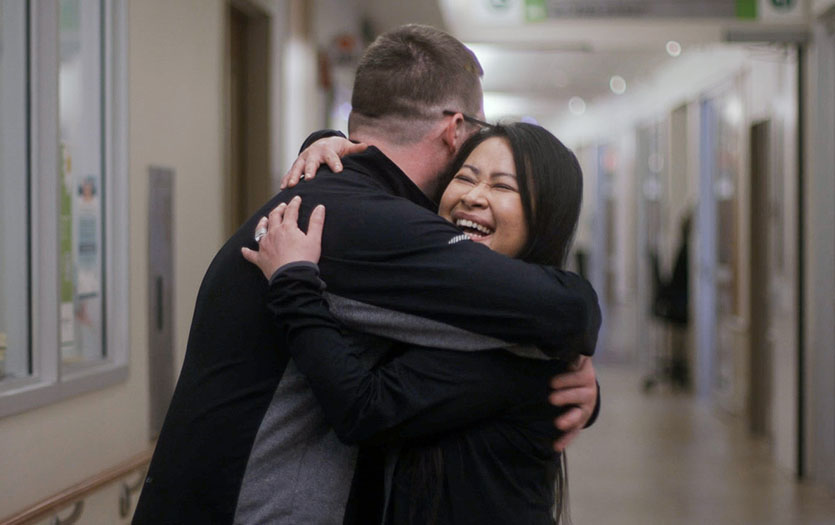Sandy Covey, RN, Parkview Surgical Trauma ICU, is always thankful she gets to do the work she loves, but she never thought it would save her life.
“I think everything would have been different had I not been at work,” she recalled. “I would have second-guessed myself because I didn't want to believe that was what was happening to me.”
Sandy is referencing the day she had a stroke at Parkview Regional Medical Center. “Shortly after my shift started, I remember I went in with my patient, and I was putting his socks back on. And when I stood up, I just got a little lightheaded, but I didn't think anything about it.
“I went over to the computer and just kind of stood there for a second and then had muffled hearing. So, I went into my charge's office and said, ‘I don't know what's happening right now, but something is really wrong.’”
As healthcare professionals, Sandy’s co-workers knew they needed to act promptly. “Time is definitely of the essence, so everybody responded really quickly.” And while Sandy didn’t immediately recognize what was happening to her, she was familiar with the signs of a neurological event. “From a nurse's perspective, if I would see my patient like that, I would definitely feel like they were having a stroke. But I argued with myself. I don't have a lot of family members who’ve had strokes. My fear took over, and I just thought if they called my husband and I could just go home, I’d be fine.”
It took the voice of a trusted peer to convince Sandy that she was not fine, and that she needed to get medical attention. “It was Bryson [Robuck, NP, Parkview Neurosciences]–he stood in the doorway and he said, ‘You can't go. We have to go downstairs, we have to make sure that you're okay. And if it wasn't for him, things would have been very different.”

Every second counts with stroke
“Time is key,” Shamir Haji, MD, Neurocritical Care, Parkview Neurosciences, said. “Getting to the hospital right away improves your chances of healing and having the best outcome.”
He shared that Sandy presented with the worst headache of her life. “Think about it as an explosion going off inside your skull. The blood in the vessel is released throughout the brain tissue, causing severe pain. In the setting of an aneurysmal subarachnoid hemorrhage, the source of the bleeding is a weakening of a vessel wall. We call that an aneurysm.”
Treatment techniques have improved over the years, and there are far less invasive options now, but they are most effective when done quickly. “They find the aneurysm and put a bunch of coils in there to prevent it from re-rupturing after the patient leaves the ICU, but many of them have a prolonged recovery.”
On the other side of stroke
“Being a nurse, I've seen so many patients go through the process, and despite everything that I've seen, my recovery at home has not been the easiest,” Sandy admitted. “I was almost scared they would say that I couldn’t come back; that I couldn’t do my job. What if I lost that? That's who I am. But everyone here has made sure that was something that I kept. They have been so supportive.”
Dr. Haji credits Sandy’s transition to her will to return. “Sandy is a gem. She is the strongest of the strong. When you're taking care of somebody you care about so much on a professional or personal basis, to see them doing well, it really just puts a smile on your face.”
The big takeaway Sandy wants others to gain from her experience is a heightened awareness that no one is immune from stroke. “I'm a 42-year-old woman, in good health, and ironically, I work here on the stroke unit. And last year on Super Bowl Sunday, I had a stroke. It can happen any time, no matter how old you are, no matter your medical history, no matter what your family history is. At any point in time, if you are having these symptoms, don't take them lightly.”
Learn more about stroke care at Parkview, by visiting us online.



